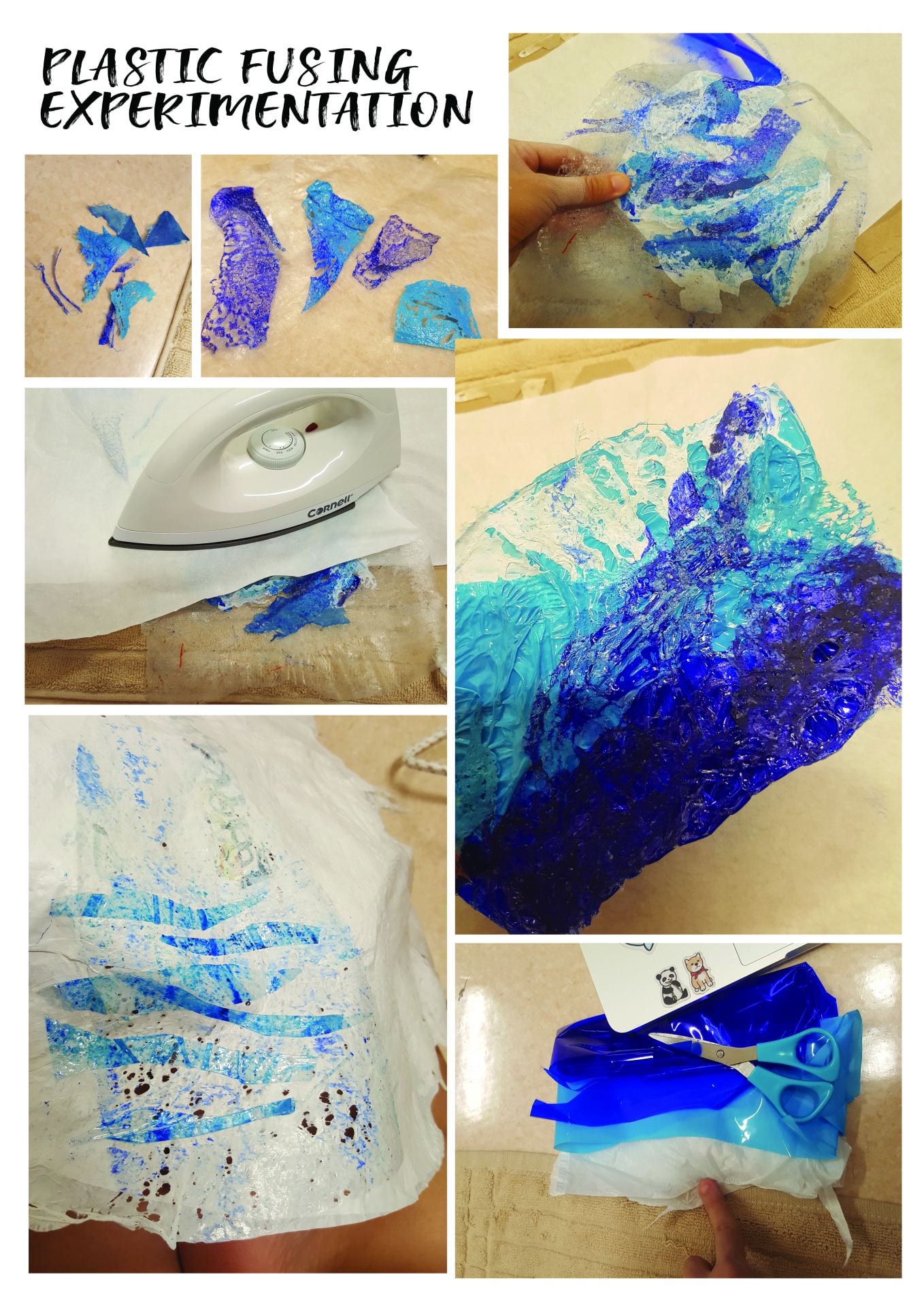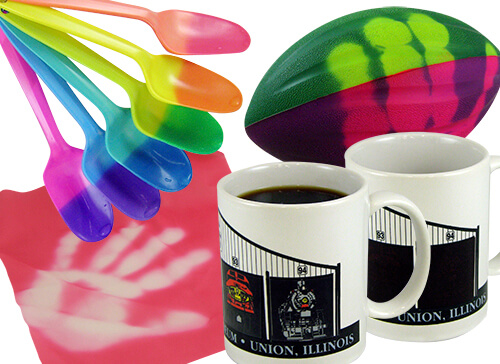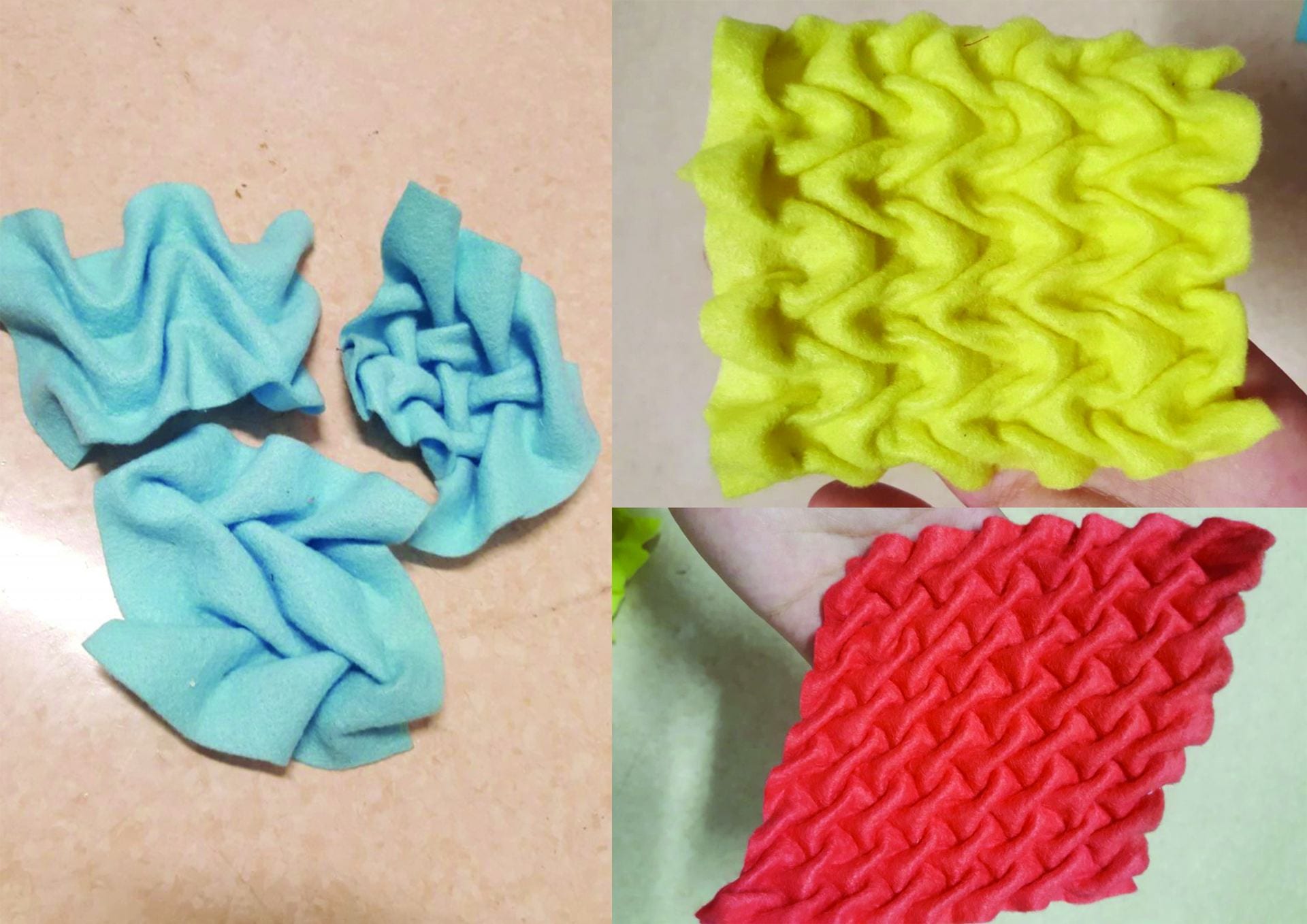After the experimentation I was still very drawn to the dynamic motion of waves, the ombre colours and ridges. Hence I was thinking of how to incorporate the texture and translate it into motion—–> how to make waves move for you. I ended up making a wave inspired ruffled skirt with an asymmetrical ruffle and a side slit. The garment is structured so that when you move, the slit widens and shows some skin and the ruffles will sway and this can add more movement when the person is dancing or moving about in it.
This tutorial is very similar to what I did in making this skirt!
Coming up with the overall design:
Chosen design (1) and template of pieces needed:
Using an old skirt as a template gauge and adding 1cm seam allowance to all pieces to be cut.
Pinning pieces down together and constantly revising the overall fit by trying on and then making alterations.
Choosing colours and spraying on spray paint to colour fabric and create ombre effect.
Final product and product board:
It was tedious to get the measurements right and seam ripping easily took up many hours a day to remove when the measurements were slightly off. The gradation of the colours using spray paint turned out better than dyeing colours as I had better control of the medium. It was my 2nd time sewing apparel hence the slow progress and the whole process took 1.5 weeks to complete, was tedious but fulfilling. Thankful to have learnt many techniques in surface design class and brush up on tailoring skills.

















































![Shurhold Bug & Tar Remover Sponge [282]](https://i-h1.pinimg.com/564x/eb/a1/d5/eba1d57fd3bea656fa250bb925c07954.jpg)















.jpg)























